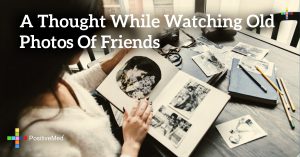While the incidence of many cancers is declining, incidence of thyroid cancer, especially in women is steadily increasing. It’s got everyone wondering why this is happening.On one of his popular shows, Dr. Oz discussed about thyroid cancer. In this program he mentioned that this increase could possibly be related to the use of dental x-rays and mammograms. He also showed that on the apron the dentist uses on you during dental x-rays there is a little flap that should be lifted up and wrapped around the neck. Many dentists and/or technicians don’t bother to use it. Also, there is something called a “thyroid guard” for use during mammograms. Unfortunately, in many cases technicians don’t bother to use these flaps too and usually put them in their drawers, unless a patient asks for it!On the other hand, many discussed that the amount of X-ray is not enough to cause cancer. So we’re sharing both sides of the story in this page:
Here is Dr Oz’s version of the story:
It’s not clear what is causing this upward trend in thyroid cancer diagnoses. Some think the increase is attributed to improved and more precise diagnostic technology, like imaging and biopsy techniques, because the increase incidence was primarily from hard to detect, tiny tumors. Still, there are some reasons to believe that other factors may be involved.
Thyroid cancer is 4 times more common in women then men, so the finger naturally points to estrogen. And it has been suggested in some studies that estrogen might fuel the growth of thyroid cancer cells, which have surface receptors with a particular affinity for estrogen.
Interestingly, the increase in thyroid cancer also began to rise just as X-ray radiation was being routinely used to diagnose and treat disease. This was a time when X-rays were not only stronger, but also used indiscriminately for some unworthy conditions such as acne and tonsillitis. It was even used to measure foot size in the local shoe store.
The thyroid gland however, is very sensitive to radiation; it is a leading risk factor for the condition, especially if exposure occurred during childhood. Additionally, the thyroid can be inadvertently exposed during high-dose radiation therapy targeted to treat other types of cancer, particularly if the radioactive beam enters an area close to the gland such as the chest, neck and head, or from total body radiation used prior to bone marrow transplantation.
And although routine dental X-rays, chest X-rays and mammograms of today use much lower and safer amounts of radiation, some worry about this as a thyroid-damaging source. Some professionals say to protect the thyroid people should wear a lead thyroid shield (and apron when possible) when undergoing these procedures block radiation reaching the thyroid gland, and to limit tests using X-rays to those that are absolutely necessary.
The Thyroid Self-Exam
One easy way to get a hold on thyroid health is to get to know your thyroid better by performing periodic thyroid self-exams. Like a breast self-exam, doing this evaluation routinely lets you become more familiar with the terrain. If you find a lump, even if it is the size of a tiny pebble, have it checked by a doctor.
Here’s how to do it:
- Stand in front of a mirror keeping your eye on the area just below the Adam’s apple and right above the collarbone.
- Drink some water and tilt your head back slightly, just enough to keep your eye focused on the thyroid area while you swallow
- Look and feel for any bulges and bumps
- Repeat a few times
- Report any findings to your doctor
Dr. Oz, Thyroid Shields & Mammography — The Popular TV Host Sparks a Debate With Radiology
By Kathy Hardy
Radiology Today
Vol. 12 No. 6 P. 18
The latest controversy surrounding mammography comes from an unlikely source—a cardiovascular surgeon with his own syndicated television show. Mehmet Oz, MD, an Oprah Winfrey protégé and host of The Dr. Oz Show, started a debate over whether radiation exposure from mammography could be causing an increase in thyroid cancer when he recommended that women wear lead thyroid shields when getting their mammograms.
Recommendation Without Data
“There has not been any data on this, but personally, if I was getting a mammogram, I would use [a thyroid shield] too,” Oz said in the episode. “Because [of] the amount of radiation exposure, although it’s very small in mammography, it’s not that dissimilar from dental x-rays.”
The radiology community responded to the December rebroadcast with a joint statement from the ACR and the Society of Breast Imaging (SBI), referring to “an erroneous media report that the small amount of radiation a patient receives from a mammogram may significantly increase the likelihood of developing thyroid cancer. This concern simply is not supported in scientific literature.”
“Correlation is not causation,” says Constance Lehman, MD, PhD, director of imaging at the Seattle Cancer Care Alliance in Washington and a professor of radiology at the University of Washington. “Screening mammography is not an area where there should be a concern that this imaging exam causes significant harm to the patient. It’s not good science.”
For women who get mammograms every year, this debate may not sway them away from this routine. However, some in the radiology community believe the discussion surrounding the issue may keep some of the approximately 32% to 39% of women (mammography rates vary by race, according to the Centers for Disease Control and Prevention) from having a mammogram.
“All these little controversies are dissuading women from having mammograms,” added Daniel B. Kopans, MD, a professor of radiology at Harvard Medical School and director of breast imaging at Massachusetts General Hospital, another guest on the April episode
On the show, Kopans differentiated mammography from dental x-rays by explaining that x-rays are like a spotlight. In a darkened room, a spotlight would illuminate only the area at which it was directed. Similarly, x-rays are confined to a specific area.
“The thyroid may be ‘illuminated’ during dental x-rays, but there is no radiation to the thyroid during a mammogram,” he says.
Kopans explains the only radiation that reaches the thyroid during a mammogram is scatter and that studies show this scatter radiation amount is equivalent to 30 minutes of background radiation that people receive every day from the environment.
The Take-Home-Message:
Do your routine mammography. Never skip mammography because of the fear of radiation or its pain. Always ask the technician to use radiation shields; And insist if necessary!





